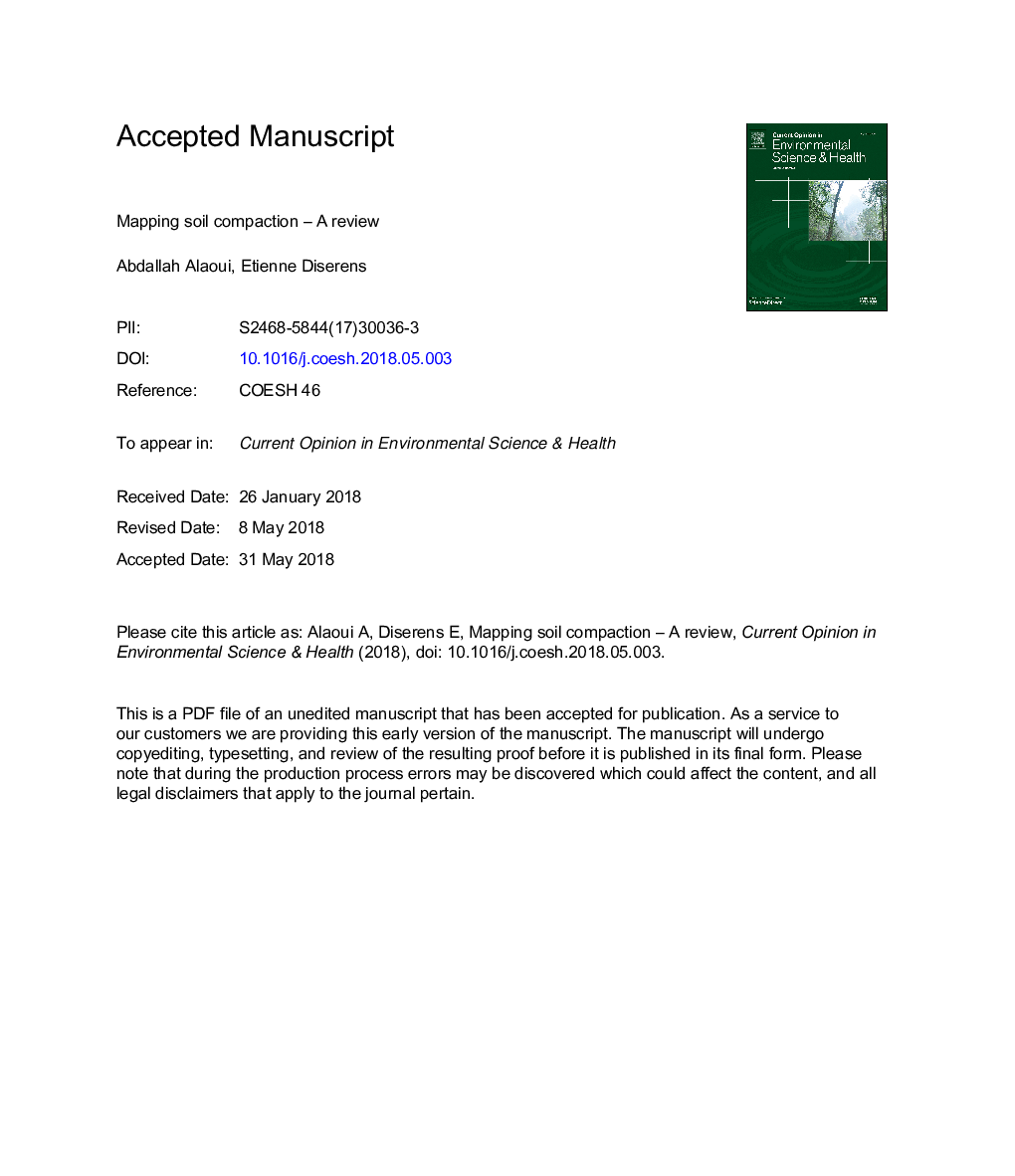| Article ID | Journal | Published Year | Pages | File Type |
|---|---|---|---|---|
| 8940577 | Current Opinion in Environmental Science & Health | 2018 | 15 Pages |
Abstract
Land degradation due to soil compaction is a widespread phenomenon. Delineating maps of topsoil compaction is a challenging task due to its dynamic nature, which is highly variable in time and space. This review paper sheds light on existing approaches and methods of mapping soil compaction. At the plot scale, there are three ways of doing so: (1) Direct measurement of penetration resistance (PR) and electrical conductivity, which can be scaled up using geostatistical approaches or georeferenced data; (2) calculation of vertical stress, taking into account the total load and contact area, soil characteristics, and machine load; and (3) computation of the pre-consolidation stress from pedo-transfer functions based on key soil properties obtained from available databases. At larger scales, indirect relationships are used to predict risk of compaction based on measured values, such as PR values, soil moisture, or organic matter, combined with a cartographic depth-to-water index derived from a light detection and ranging technique or other digital elevation model approaches. Among the examples we provide a 3D mapping based on the TASC (Tyres/Tracks And Soil Compaction) model, which opens new avenues in mapping methodology for helping practitioners, advisers, and policymakers to mitigate soil compaction. Since subsoil compaction can persist over decades, indicating a long memory effect (especially in the case of afforestation), knowledge of previous land uses must be taken into account for mapping areas subject to soil damage. Multi-stakeholder engagement can help to compile this information.
Keywords
Related Topics
Life Sciences
Environmental Science
Environmental Chemistry
Authors
Abdallah Alaoui, Etienne Diserens,
